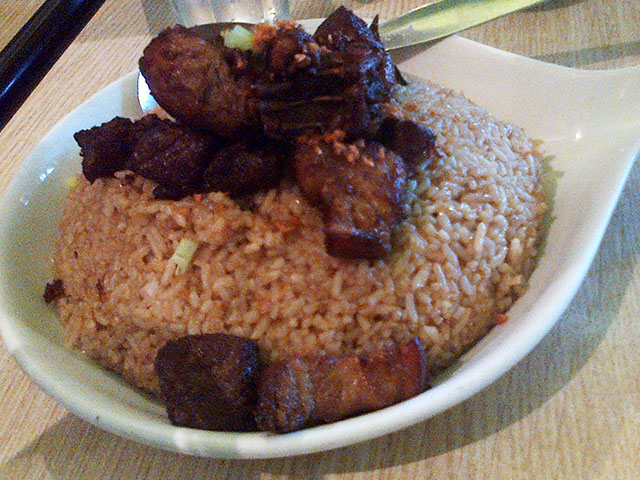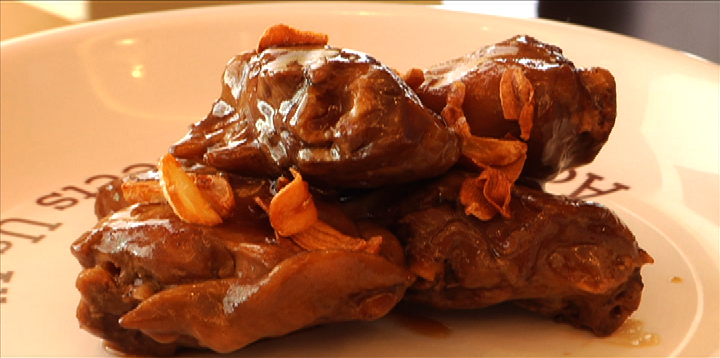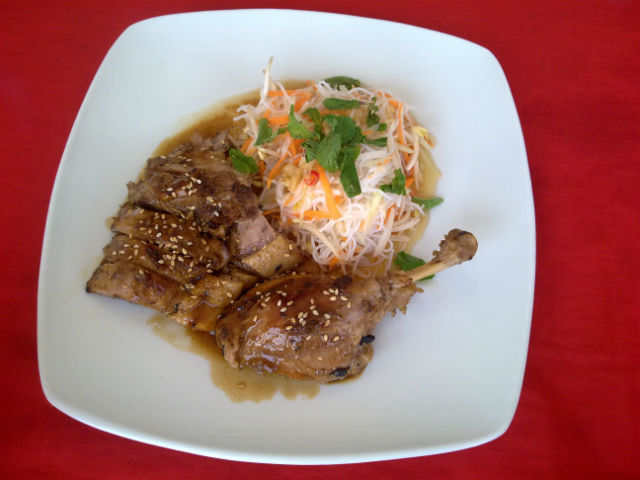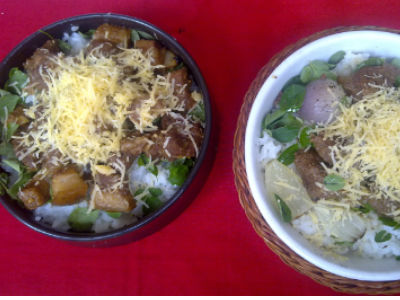Filtered By: Scitech
SciTech
Food for thought: Adobo and the Filipino Genome
By Julia Jasmine Madrazo-Sta. Romana
"(When reporting about science,) you should be able to explain it to your mom."—Dr. Michael PuruggananNYU Dean of Science Professor of Genomics
 When I learned that Dr. Purugganan had quipped about how science writers should know how to explain science to their mothers, I took that as a challenge. First and foremost, because of my background in molecular biology. And secondly, because I’m a mom and I have a good idea of how a lot of moms think.
When I learned that Dr. Purugganan had quipped about how science writers should know how to explain science to their mothers, I took that as a challenge. First and foremost, because of my background in molecular biology. And secondly, because I’m a mom and I have a good idea of how a lot of moms think. I figured, “What better way to explain Dr. Purugganan’s work on the Filipino genome than by using adobo as a metaphor? It is, after all, a comfort food that Filipinos all know and love. Genome: A big cookbook
So: think of the Filipino genome as one big cookbook. And in that cookbook, each recipe represents a gene or the traits that we have that make us who we are.
In every cookbook, there are recipes that we cook often; those that we cook rarely; those that we cook only on special occasions; those that we don’t cook but we know are there; and those that we don’t cook because we just don’t like them at all.
Genes are like that.
There are some genes that we see right away because they manifest in a physical manner; some that we don’t see but are there working on the side lines (like our body producing proteins and hormones); some that are just there but do nothing; some that are activated by specific triggers (growth spurts, allergy attacks); and genes that we don’t want (genes that make us predisposed to disease) but are there because of our heritage. Everyone's favorite recipe
What Dr. Purugganan wants to do is to study the Filipino genome. Going back to the cookbook analogy, what he wants is to trace where our genes —the “recipes” that make us who we are— came from and to trace their evolution and interconnectedness.

Let’s take adobo, for example.
With humans, our genes are mostly identical from person to person, but with slight modifications that make us look and act differently from each other. The specific variations that Dr. Purugganan is looking for are SNPs or “single nucleotide polymorphisms”. Recipe variations
SNPs are very small variations within the genes —just a single molecule's worth, in fact— that are commonly seen and associated with certain traits, races, families.
In a way, genetic variations are like variations in adobo. We know that everyone cooks adobo differently because of how they learn to cook it, how everyone around them learns to cook it, what materials are on hand —and, of course, their personal tastes.
So how and what can these SNPs tell us about ourselves as Filipinos?
 Back to the adobo analogy: when you look all over the Philippines, you’ll see that the country's different regions have distinct differences in the way they cook adobo.
Back to the adobo analogy: when you look all over the Philippines, you’ll see that the country's different regions have distinct differences in the way they cook adobo. For example, Bicolanos, known for their spicy food, have a well known variation of adobo that uses gata and a lot of chilli. On the other hand, regions in the Philippines close to the coastline cook adobo with fish. They’re all adobo, but they all have something distinct in them that allows a person to identify from what region of the Philippines they came from.
It’s the same with our genes. There’s a database that contains all the SNPs traced in the human genome and there are SNPs that are predominant in certain races or genetic groups.
It’s a lot like how we’re able to identify where a person grew up based on our accents or how we’re able to tell the difference between a Chinese person, a Japanese person, and a Korean based on their eyes —or to hazard a guess by taste about who cooked your adobo or where it was cooked.
The essence of adobo
In my mind I can imagine my mother interrupting, “Yes, you can tell where a person came from based on that but how can you tell if that person is related to another person? What if an Ilocano moved away and married a Davaoena? Wouldn’t their child have completely different genes?” (Trust my mom to pull me and my husband into the picture.)
This is where adobo can help us again with another, almost philosophical food analogy: What makes adobo, adobo?
When genes recombine to produce variations within the sperm and egg cells, the genes don’t recombine completely. There are some areas of the genes that you never tamper with because they’re essential. Those that can be modified are the ones that bring variety.
In the same way, two different dishes can be identified as pork adobo even though one of them is purely pork and one has potato as an extender.
“But how can you still tell if a Filipino has Spanish or Chinese blood after several generations?” my mother might be asking at this point.
Just the same way, you can tell a lot about a person or a family the way they cook adobo. My husband, for instance, knows how to cook tuna adobo —a variation common in southern Philippines. It’s a trademark Mindanao dish but you can tell from the way he cooks it that he’s influenced by his Ilocano roots because he likes to use a lot of garlic and he likes it hot. Passing it on
 But a few years from now, when he teaches our daughter how to cook, he’ll invariably teach her how he does tuna adobo. And eventually, our daughter will develop her own version but the way she cooks her adobo would be influenced by the way her father taught her how to cook.
But a few years from now, when he teaches our daughter how to cook, he’ll invariably teach her how he does tuna adobo. And eventually, our daughter will develop her own version but the way she cooks her adobo would be influenced by the way her father taught her how to cook. Her version may be a little less spicy but still keep lots of garlic. Or maybe she'll prefer spice over pungency. And, in time, she’ll teach her children to cook adobo and traces of my husband’s technique would still be there.
Clues of her paternity will still be there no matter how she changes her recipe, because the way she knows how to do adobo is still influenced by the way her father taught her to do it. Genetic adobo: Our shared heritage
Every ancestor we have leaves a trace that helps define us, that partially makes us who we are. No matter how far we have gone and no matter how far we may go, we will always carry our origins with us.
I’m really excited to see the results of Dr. Purugganan's proposed Filipino Genome project, so that we can finally understand what make us who we are as a people. But we shouldn’t also forget that our genes only define a portion of ourselves. How we define ourselves as Filipinos will depend on how we want ourselves to be seen by the world and what we’re all doing to contribute to that vision.
In the meantime, there's always adobo. — TJD, GMA News
Julia is a graduate of molecular biology and biotechnology from UP Diliman. She is a former science research assistant at the UP Marine Science Institute and medical research information analyst for a Makati-based company. She left her former industry to regain her roots in Davao, writing about the local businesses and lifestyle for GMA News Online, but refusing to surrender her first love: she continues to blog, breathe, and write about Science.
More Videos
Most Popular




